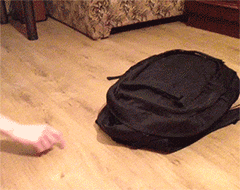Text



Greater New Old Kanal Housing and Land Authority Industrial Development Authority Industrial Development Authority
263 notes
·
View notes
Text

This tattoo is very funny when you know that kerning is the fancy term for the space between letters. Very important in text design to get it right.
20K notes
·
View notes
Text
I don't have any opinion on the latest Taylor Swift album except that whenever I see someone write TTPD I parse it as The Thousand-Pear Door
0 notes
Text
diversity loss this trans man is just as much of an emotionally unavailable avoidantly attached brick as any cis guy
19K notes
·
View notes
Text
the idea that restrooms, locker rooms, etc need to be single-sex spaces in order for women to be safe is patriarchy's way of signalling to men & boys that society doesn't expect them to behave themselves around women. it is directly antifeminist. it would be antifeminist even if trans people did not exist. a feminist society would demand that women should be safe in all spaces even when there are men there.
37K notes
·
View notes
Text
sometimes in klife thers a cat oin you and you just have to deal wiht it
2K notes
·
View notes
Text
Since the 1960s, the world has seen a spike in the number of natural disasters, largely due to rising sea levels and an ever gradually increasing global surface temperature.
The good news? We’re getting better at helping each other when disasters strike.
According to a recent study from Our World In Data, the global toll from natural disasters has dramatically dropped in the last century.
“Low-frequency, high-impact events such as earthquakes and tsunamis are not preventable, but such high losses of human life are,” wrote lead authors Hannah Ritchie and Pablo Rosado.
To conduct their research, Ritchie and Rosado gathered data from all geophysical, meteorological, and climate-related disasters since 1900. That includes earthquakes, volcanic activity, landslides, drought, wildfires, severe storms, and mass floods.
In the early-to-mid 20th century, the average annual death toll from disasters was very high, often climbing to over a million.
For example, the study cites that in 1931, 2.7 million people died from the Yangtze–Huai River floods. In 1943, 1.9 million died from the Bangladeshi famine of 1943. Even low-frequency events had extreme death tolls.
“In recent decades we have seen a substantial decline in deaths,” Ritchie and Rosado observed. “Even in peak years with high-impact events, the death toll has not exceeded 500,000 since the mid-1960s.”
Why has the global death toll from disasters dropped?
There are a number of factors at play in the improvement of disaster aid, but the leading component is that human beings are getting better at predicting and preparing for natural disasters.
“We know from historical data that the world has seen a significant reduction in disaster deaths through earlier prediction, more resilient infrastructure, emergency preparedness, and response systems,” Ritchie and Rosado explained in their study.
On April 6, [2024],a 7.2 magnitude earthquake rocked the city of Hualien in Taiwan. Days later, as search and rescue continues, the death toll currently rests at 16.
Experts have praised Taiwan for their speedy response and recovery, and attributed the low death toll to the measures that Taiwan implemented after an earthquake of similar strength hit the city 25 years earlier. Sadly, on that day in 1999, 2,400 people died and 11,000 were injured.
In an interview with Al Jazeera, Wang Yu — assistant professor at National Taiwan University — said that event, known as the Chi-Chi earthquake, revolutionized the way Taiwan approached natural disasters.
“There were lots of lessons we learned, including the improvement of building codes, understanding earthquake warning signs, the development and implementation of earthquake early warning (EEW) systems and earthquake education,” said Wang.
Those same sensors and monitoring systems allowed authorities to create “shakemaps” during Hualien’s latest earthquake, which helped them direct rescue teams to the regions that were hit the hardest.
This, in conjunction with stronger building codes, regular earthquake drills, and public education campaigns, played a huge role in reducing the number of deaths from the event.
And Taiwan’s safeguards on April 6 are just one example of recent measures against disasters. Similar models in strengthening prediction, preparedness, and recovery time have been employed around the world when it comes to rescuing victims of floods, wildfires, tornados, and so on.
What else can we learn from this study?
When concluding the findings from their study, Ritchie and Rosado emphasized the importance of increasing safety measures for everyone.
Currently, there is still a divide between populations with high gross national income and populations living in extreme poverty.
Even low-income countries that infrequently have natural disasters have a much higher death rate because they are vulnerable to collapse, displacement, and disrepair.
“Those at low incomes are often the most vulnerable to disaster events; improving living standards, infrastructure, and response systems in these regions will be key to preventing deaths from natural disasters in the coming decades,” surmised Ritchie and Rosado.
“Overall development, poverty alleviation, and knowledge-sharing of how to increase resilience to natural disasters will therefore be key to reducing the toll of disasters in the decades to come."
-via GoodGoodGood, April 11, 2024
370 notes
·
View notes
Text
Sometimes it feels like y’all just make up nonbinary people to get mad at . “Super misogynistic nonbinary theyfab person named Sock who doesnt understand the REAL trans experience bc they look like a cis women” like okay yeah your words mean nothing to me
2K notes
·
View notes
Text
people often use the term "ethical AI" to describe AI that avoids training on any copyrighted material without permission from the copyright holder
given that this idea is based around protecting existing investments and would primarily serve to benefit large companies that own massive media libraries, I propose instead describing it as "capitalist AI"
34 notes
·
View notes
Text
the idea that restrooms, locker rooms, etc need to be single-sex spaces in order for women to be safe is patriarchy's way of signalling to men & boys that society doesn't expect them to behave themselves around women. it is directly antifeminist. it would be antifeminist even if trans people did not exist. a feminist society would demand that women should be safe in all spaces even when there are men there.
37K notes
·
View notes
Text

Lmao how is this real, "the ambient sounds of the world were wrong, sir"
29K notes
·
View notes






